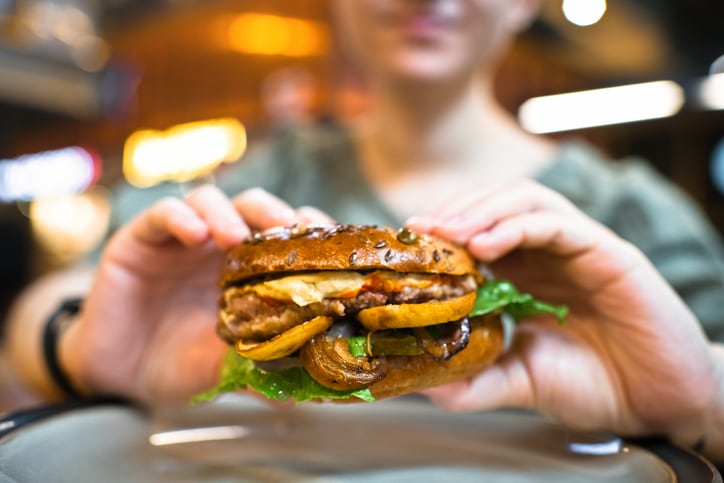Mushroom producer Joyn Foods aims to expand its 50Cut mushroom mycelium ingredient from just an ingredient to a blended meat product that contains its mushrooms and conventional meat.
Originally Mush Foods provided its 50Cut ingredient for foodservice operators and industrial meat producers under a B2B business model. Yet, confusion with overnight oats brand Mush led the company to phase out Mush Foods. Instead, 50Cut’s business will continue as a B2B ingredient and Joyn Foods will operate as a separate retail and DTC-facing blended meat brand featuring the 50Cut ingredient, according to CEO Shalom Daniel.
Launched in May 2024, 50Cut is made via a patented solid-state fermentation process. The ingredient can be used in blends such as 30/70 or 50/50 with ground meat, according to Joyn Foods.
The company also closed a $3 million bridge round earlier this spring to beef up US commercialization. The round was led by Lever VC, along with participation from existing investors Siddhi Capital and Viola Ventures, with strategic investor support from Bios Ventures of Grupo Bios, a Colombian meat and agriculture company.
Blended meat remains challenged due to confusion around product naming and consumer education
While blended meat has gained some traction with companies like 50/50 Foods and Asentia offering vegetable and animal protein blends in patty, meatball and sausage formats, the category remains in limbo despite the underlying reducetarian goals.
One of the challenges for these companies is product naming and consumer understanding, Andrew Arentowicz, CEO of 50/50 Foods, previously reported.
He notes: “There is still no real home for us in store. We are trying to help meat-eaters reduce, but we do not belong next to the veggie burgers, and we are not a traditional beef product either. That gray area is part of the opportunity.”
Similar to its competitors, 50Cut’s mission is to deliver its mushroom ingredient for flexitarians and meat-eaters who are motivated to reduce meat consumption for health and environmental reasons, Daniel said.
Environmental impact
In fact, blended meat’s environmental impact is worth noting. According to 50Cut’s third-party lifecycle analysis, the upcycled ingredients from soy, beer and wood production used to feed Joyn Foods’ mushrooms amounted to 0.015 per CO2e per kilogram of product, which is less than Impossible Foods and Beyond Meat, Daniel added.
“If you blend 20% of our product with beef, you reduce 20% of the carbon footprint,” he said.
Further, 50Cut’s customers choose the product for its taste and texture – a 180 from the 1980s when blended meat was introduced as a cost-effective alternative to 100% meat by adding fillers and binders and met with consumer pushback, he added.
Rather, today’s blended meat companies focus on delivering premium, nutritious ingredients – such as 50/50 Foods’ USDA-certified beef for its blended beef and vegetable patties.
The category still has a long road ahead in convincing consumers that these products are not lesser alternatives or more expensive than ground beef, Daniels noted.
Although for 50Cut, the product serves as a “premium solution” that can be more expensive than ground beef because of its proprietary mushroom production methods, he said.
Regulatory and labeling
Generally, blended meat’s regulatory classification falls under USDA oversight when the product contains more than 50% animal-based meat than alternative protein, and FDA jurisdiction when it contains less than 50% animal-based meat.
In the case of Joyn Foods and 50/50 Foods where blends retain at least 50% meat, they remain under USDA regulation.




